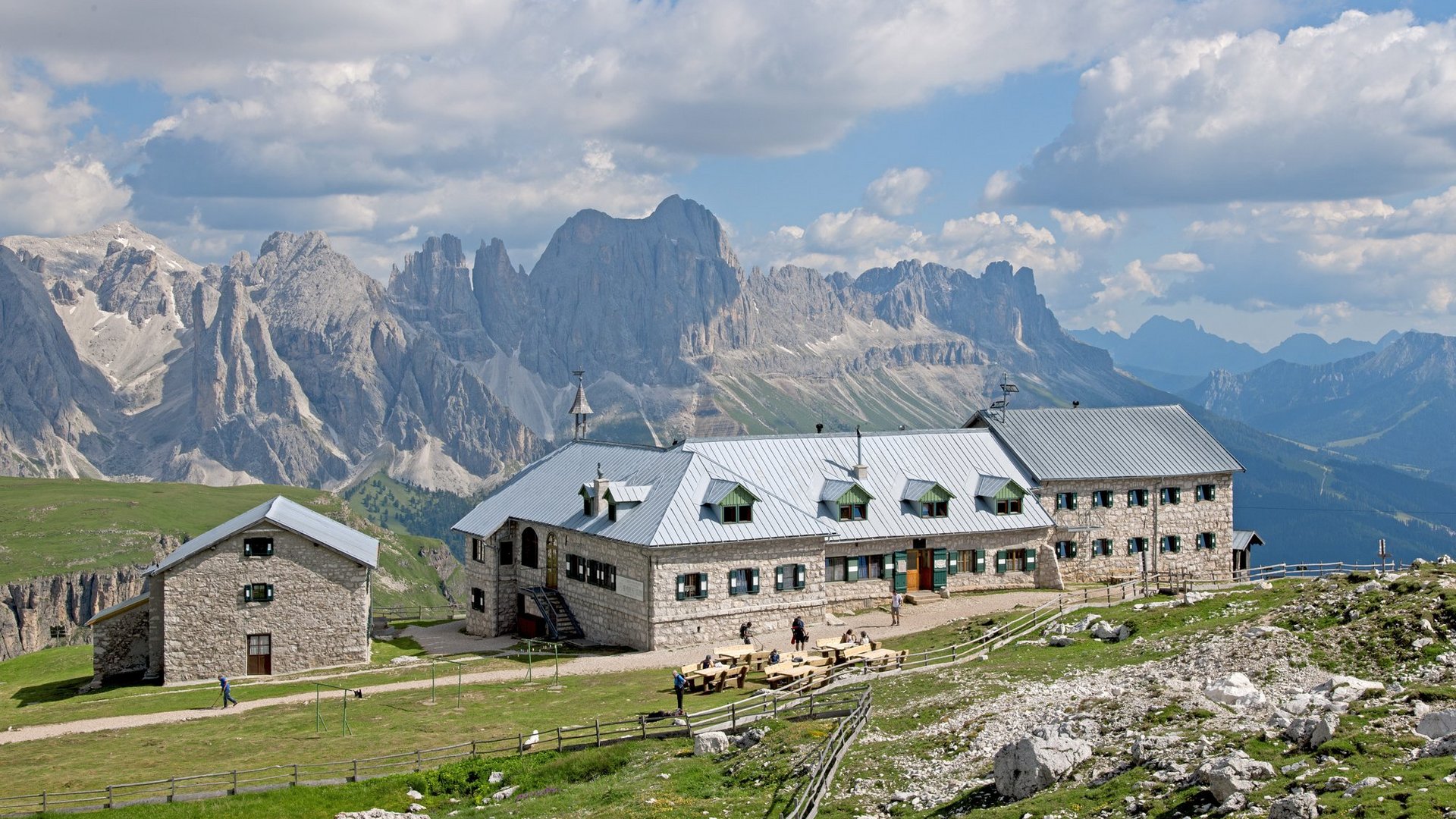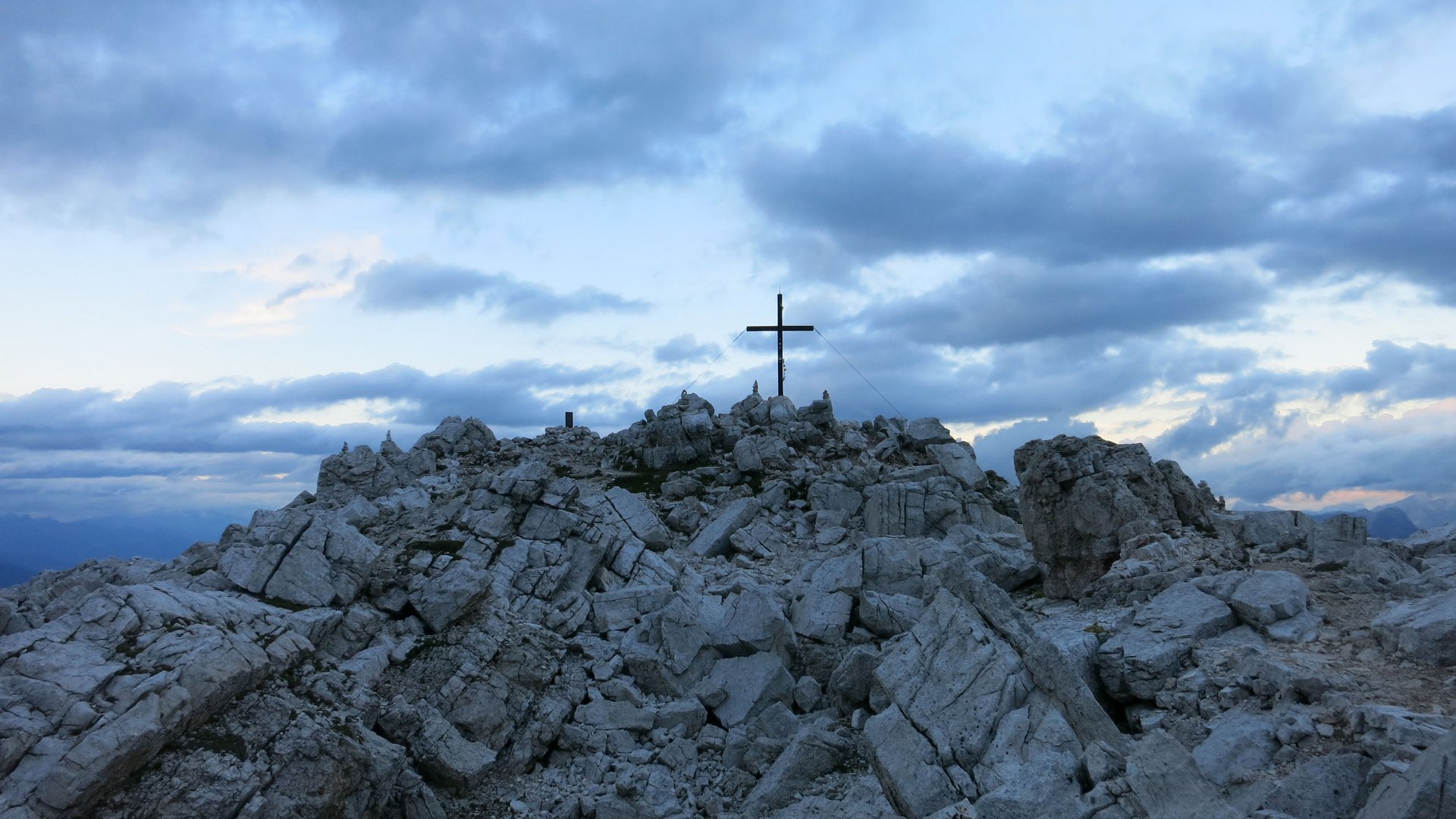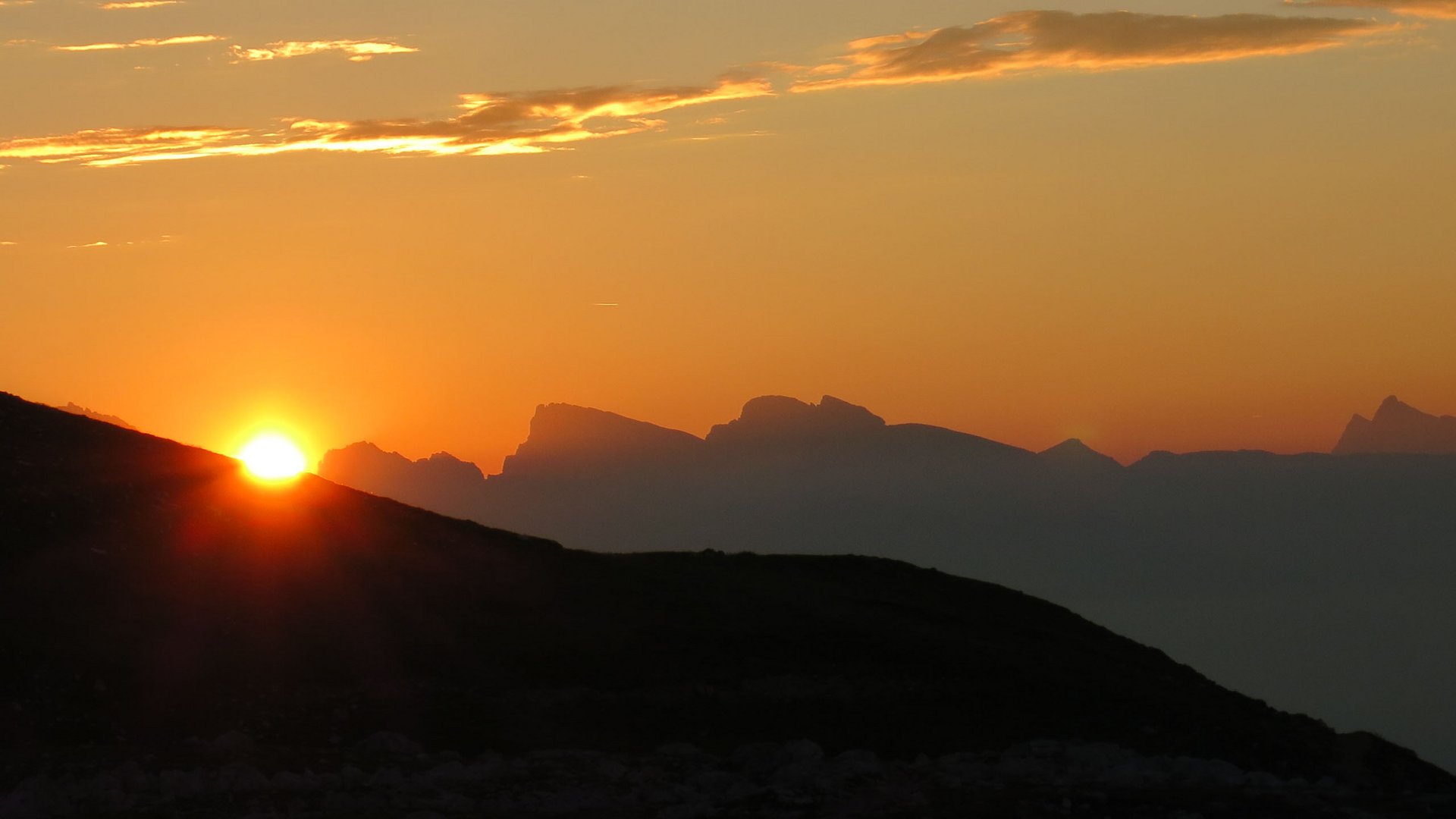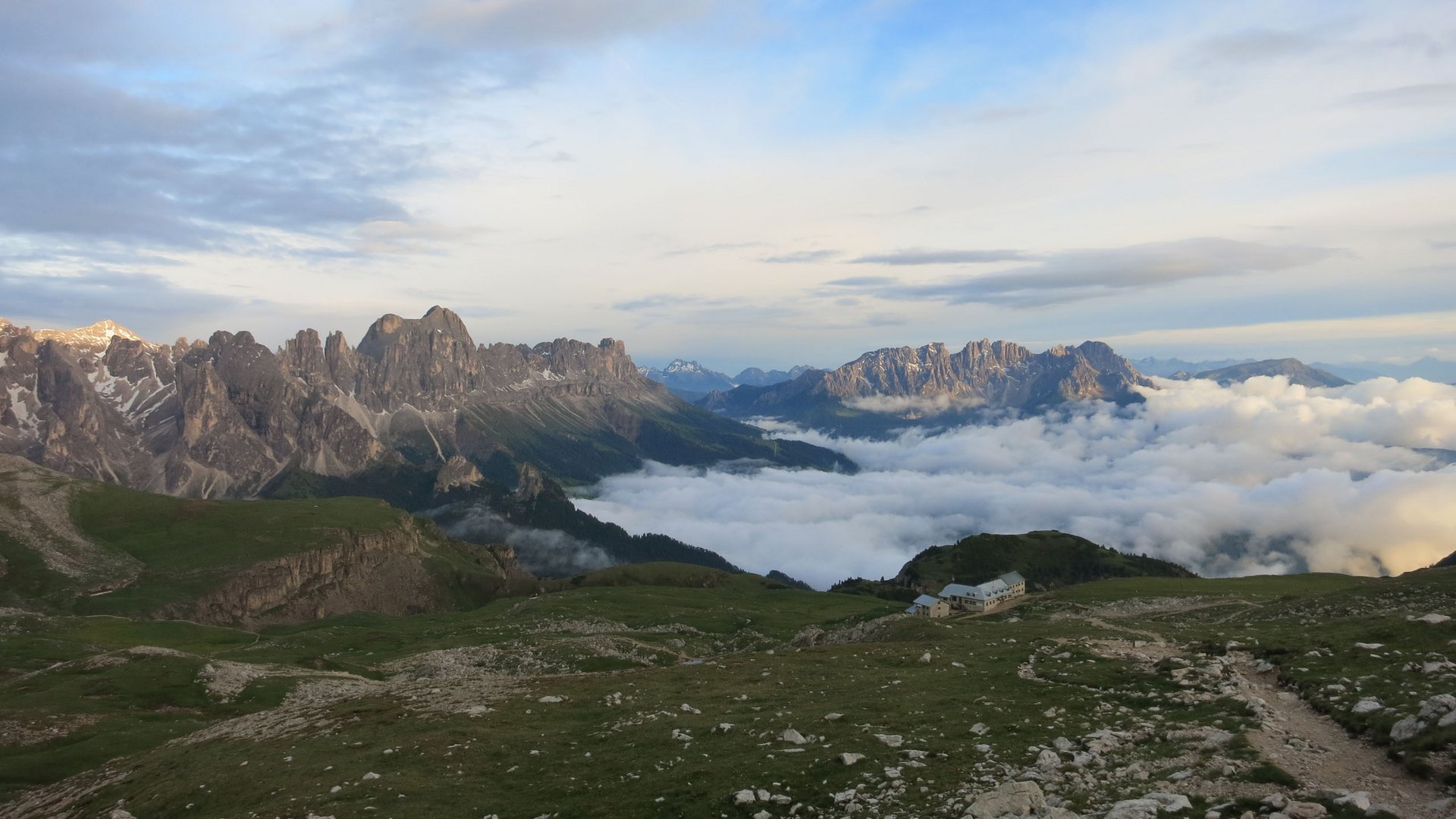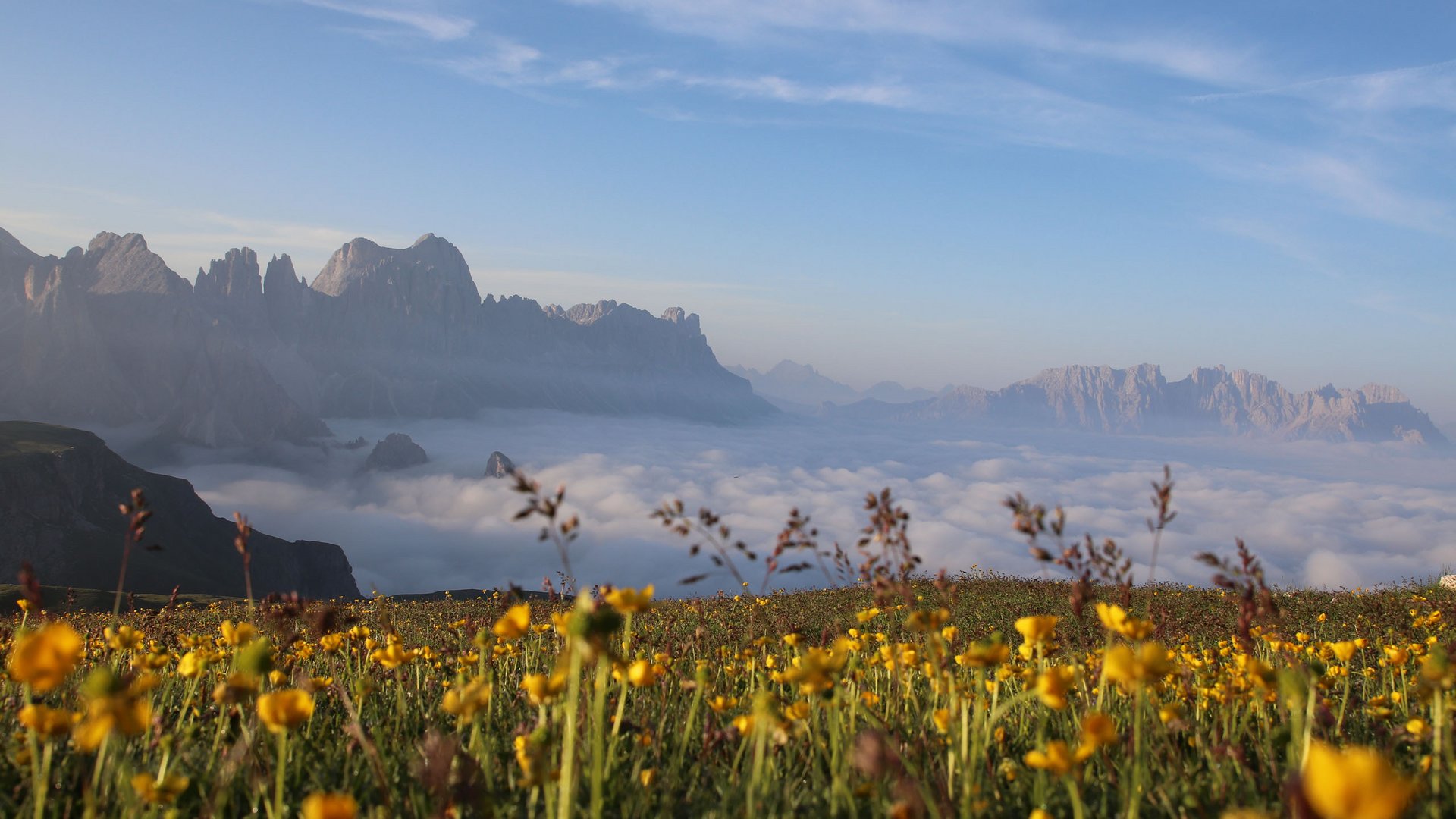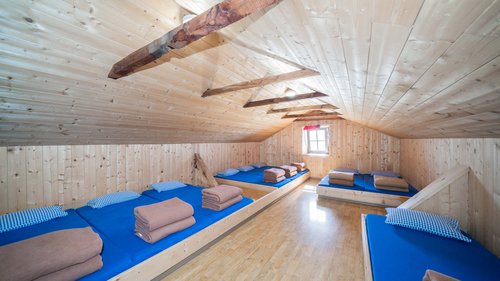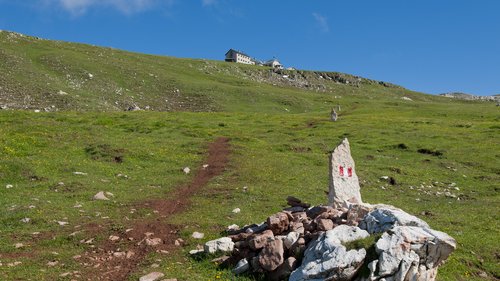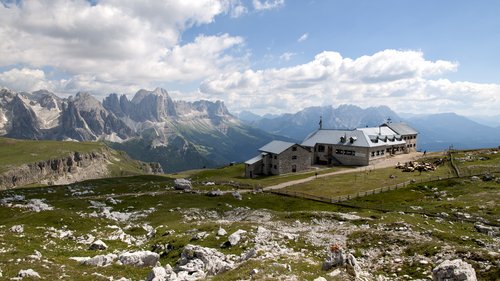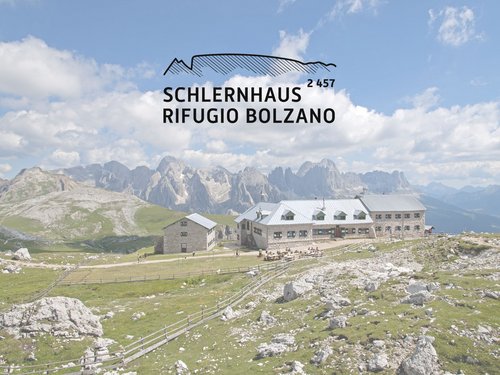Get prepared with our checklist
1. Basic requirements for mountain hiking
- Surefootedness
- Depending on the route: no fear of heights
- Good stamina and strength
- Good self-awareness
2. Important information
- Elevation difference in ascent and descent
- Total distance in kilometres
- Route conditions
- Terrain and difficulty
- Hiking times for individual routes and total hiking time
- Points of contact such as mountain huts, cable car stations, etc. – use maps and guidebooks for this purpose.
- Timetables of buses and/or mountain cable cars – make sure you know the operating hours and last journey up/down.
3. Equipment
- The name says it all: trainers are for training in the gym, and hiking boots are for hiking! High or ankle-high hiking boots with a non-slip grip sole are a must.
- Comfortable clothing – don’t forget to layer!
- Day pack with a water bottle and some food
- Sun protection (cream, glasses, hat), no matter the weather. The high-altitude sun can be dangerous.
- Rain protection is a must, even for short hikes: a sudden summer thunderstorm can pass through faster than you can get to the hut or the valley.
- When hiking in the high mountains, a windproof jacket is necessary, and a hat is often useful: a change in the weather is often associated with a drop in temperature.
- For multi-day tours with overnight stays in huts: a sleeping bag, towel, indoor footwear, a change of underwear, and a toiletry bag are a must.
4. Before departure
- Dress appropriately for the weather and the trail.
- Inform relatives and your hut host or proprietor of the route, destination, and expected return time (calculated generously).
- Always leave early if possible, but definitely in the case of long hikes, excessive daytime heat, or when afternoon thunderstorms are predicted.
5. During the hike
- Drink fluids regularly
- Eat regularly
- Take breaks at regular intervals
- If your plans change during the hike, it is important to make sure that your contact person is informed so as not to cause an unnecessary search.
6. Safety first
- Dangerous situations that push you to the limit of your ability, such as trail breaks or steep, frozen snowfields, should definitely be a reason to turn back.
- Stay on the marked path and avoid shortcuts.
- Stay with your group.
- If you find yourself in unfamiliar terrain in fog or darkness, wait for help or better visibility the next morning, try to shelter from the cold, and don’t wander any further!
- A descent through unknown terrain can be life-threatening!
7. At the hut
- Be mindful of your use of electricity, water, and food.
- Take your rubbish back to the valley.
- Adhere to the hut rules, especially the quiet hours at night.
What to do in case of thunder and lightning
Lightning was once considered a powerful weapon of Zeus, the father of the gods, a sign of the gods’ wrath. Today we know better, but that doesn’t make lightning any less dangerous. During a thunderstorm, a warm front and a cold front meet, and the resulting electrical voltages are discharged in the form of lightning and thunder. When humidity and violent up-and-down winds are added, it’s the perfect storm. Depending on where you are, this can become a problem.
In Central Europe, the main period of thunderstorm activity is in the afternoon, between 3 and 6 p.m., and the least storm activity is observed around 9 a.m. Warm thunderstorms, in particular, will dissipate towards evening.
A simple rule of thumb allows you to determine the distance of a thunderstorm: count the seconds between lightning and thunder and divide the result by three; the resulting number roughly indicates the distance in kilometres. For example, if ten seconds pass between lightning and thunder, the thunderstorm is about three kilometres away – it’s getting close now!
There is a lot of well-intentioned advice on what to do outdoors during a thunderstorm. Some of it is helpful, but some of it is dangerous. “Look for beech trees; avoid willows?” Lightning doesn’t care about the type of tree. It usually strikes at the highest point, even if it is a beech tree.
So what should you do if you get caught in a thunderstorm on a mountain hike and can’t get to the next hut in time?
- Never make yourself the highest point in the terrain; if possible, crouch in a hollow on your rucksack with your legs together and keep at least ten metres away from trees.
- Keep a distance of at least one metre, but preferably three metres, from companions. Do not touch each other!
- If possible, crouch at the foot of a rock face, at least one metre away, always with your legs together.
